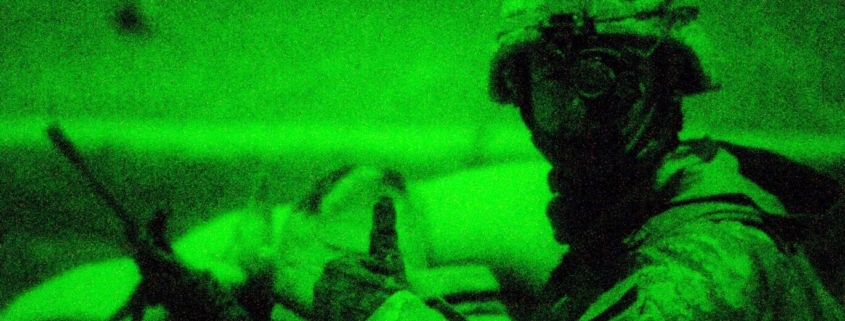COVID-19 Combat Lessons: Troop the Line
The Iraqi night was particularly dark. I climbed the stairs to the roof and eased my way into the heavily sandbagged position in one corner. A lone Soldier peered over his machine gun into the night.
If we were attacked from that side, this man would be the life-and-death difference, because our first warning would come – or not come – from his level of vigilance. That’s a heavy burden. It’s also tedious and monotonous.
We chatted for a while. The topics were likely random. Just a few minutes breaking the monotony. But it was a critical leader action.
Critical, but not particularly special. I was simply practicing what the Army had taught me as a basic leader discipline: troop the line. Honestly, I could have practiced it more.
The concept centers on Soldiers on guard duty: standing watch or pulling security for those inside a perimeter. But it applies broadly. The idea is that a leader pauses what she is doing and goes down to check on what – and how – the team is doing, at the most basic level. Sometimes this is direct reports, sometimes there are several levels of leadership in between.
To put it in perspective, there were 3 levels of leadership between me and the Soldier I chatted with. Trooping the line that many steps away does several things.
Here’s a few:
-
QA. The most obvious is the “spot check.” The leader does quality assurance by checking that team members are on the right track, doing what we think they are doing. If they are off-course, there’s a chance to correct that in real-time, productively. There’s a reason “supervise” endures as the final step in military troop leading procedures.
-
Pulse. The leader also gets a feel for the pulse of the team: How’s morale? How are people doing in the present stress, the present crisis? This sparks ideas for tangible responses the entire leader team can make.
-
Communication. Trooping the line serves as a feedback loop on what the leader thinks he has communicated. Has a “simple” message been correctly interpreted? Did I fail to communicate context – or did context deteriorate as the message went farther out?
Earlier in that deployment I visited an observation post a couple kilometers away. One of our best squad leaders was there with a handful of his men. They over-watched our critical logistics highway to prevent roadside bombs. As we talked, he pointed out something that concerned him on the other side of the highway. He wanted to run over and check it out. My reaction was “Of course. Why haven’t you checked it already?” His answer, “Because of guidance we got from you.” Ouch. My stated guidance had been counterproductive when it met the reality on the ground. It needed more context and flexibility. He and I ran over and checked it out. -
Empowerment. That feedback loop may also show you need to “give up more authority,” as General Stanley McChrystal and Chris Fussell highlight in this NYT OpEd.
-
Morale boost. This is perhaps the most important. As Denise Graziano notes, “Morale is not ‘nice to have,’ in uncertain times, it is essential.” (She also notes empowerment can help boost morale.)
A few moments with a leader during my guard shift reminds me that I’m part of the team and that the team cares about me. As a leader, this can be the easiest to miss. If all my leader does is inspect and correct, the effect on morale might be more negative than positive. I also need to know that you, my leader, care about me, not just that you’ve checked my work.
For clarity, there’s a vast difference between trooping the line and micromanagement. One is essential, the other is counter-productive. If in doubt, ask your team.
As facts and priorities change daily – or hourly, “trooping the line” will be critical to the health of your team. You’ve also got to get creative, as many teams are working remote. The second half of this article provides some practical ideas.
What does “trooping the line” look like right now for you as a leader? We’d love to hear your comments below:
[Title Photo is in the Public Domain, accessed from DVIDS. Taken by Spc. Edward Garibay. The appearance of U.S. Department of Defense (DoD) visual information does not imply or constitute DoD endorsement.]


Leave a Reply
Want to join the discussion?Feel free to contribute!